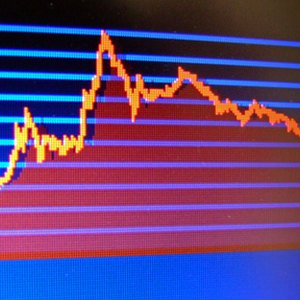
A stop trade is when a trader sets a price target as a trigger to automatically sell a stock, should it reach that price. "Market" simply refers to whatever the market is paying at the moment, and that will affect the price that you actually get on the trade.
Three Kinds of Orders
There are three basic kinds of stock orders: market orders, stop orders and limit orders. Stop orders must be combined with market or limit orders, so traders can create "stop market" and "stop limit" orders. But there is no such thing as a "market limit" order.
Market Orders
Market orders are trades placed to buy at whatever the market is willing to pay at that moment in time. If a stock is trading at $100 a share, that really means that the last trade that executed was at $100, but there are offers to buy for $99.95 (called the "bid"), or to sell for $100.05 (called the "ask"), or for $99.90, or $101.00, or whatever.
When you place a market order, you are telling the broker that you will pay whatever the lowest ask price happens to be at the moment. Your broker will fill your order at the lowest possible ask price, or combination of ask prices if necessary. This means your order is likely to be executed at a price higher than the ticker showed when you placed the order.
Limit Orders
Limit orders are the bid and ask prices. You can put in a limit order to buy that $100 stock for $99.90. Your broker will not buy for more than that price, so a seller must agree to sell for that amount by placing a market order to sell, or a limit order to sell of $99.90 or lower.
Limit orders offer you control over how much your order will cost. But you risk the possibility that the market will move away from your limit and the order will not be executed at all.
Stop Orders
A stop is where you tell the broker to automatically sell a stock at a target price. So, if you wanted to sell 1,000 shares of that $100 stock for $110, you would place a stop order with a $110 target. If the stock goes to $110, your broker will automatically sell 1,000 of your shares.
Or, if you were guarding against losing too much money, you would place a stop to sell at $95 if the stock fell to that price.
Stop Market vs. Stop Limit Orders
By default, a stop order is a stop market order. That is, if you set your stop at $95, and the stock falls below that point, you will sell at whatever bid price the broker can get.
A stop limit order means that if the stock hits $95, your broker will try to execute the sale of your shares for whatever you set your limit price to be. This could be $95, or $94.75, or any limit you set when you place the order.
Bad news about a stock might break overnight, causing it to "gap" way down from its close the previous day, so if your $100 stock has bad news, it could gap to $92 at the market's opening. At this price, a $95 stop market order will be executed. But a $95 stop order with a $94.75 limit will not, and you will still own the stock even if it continues to fall.
